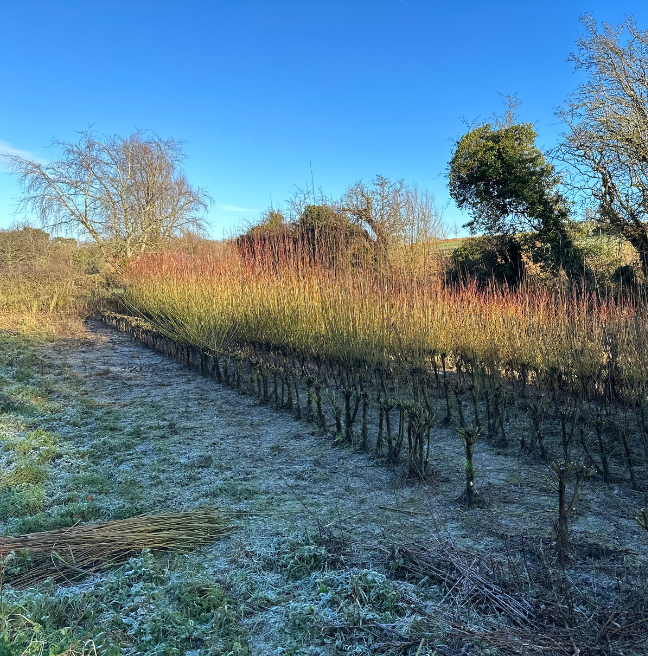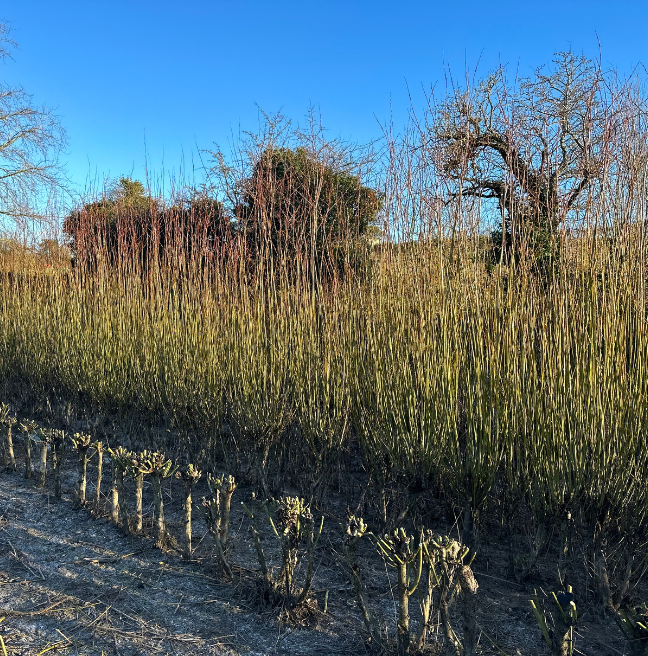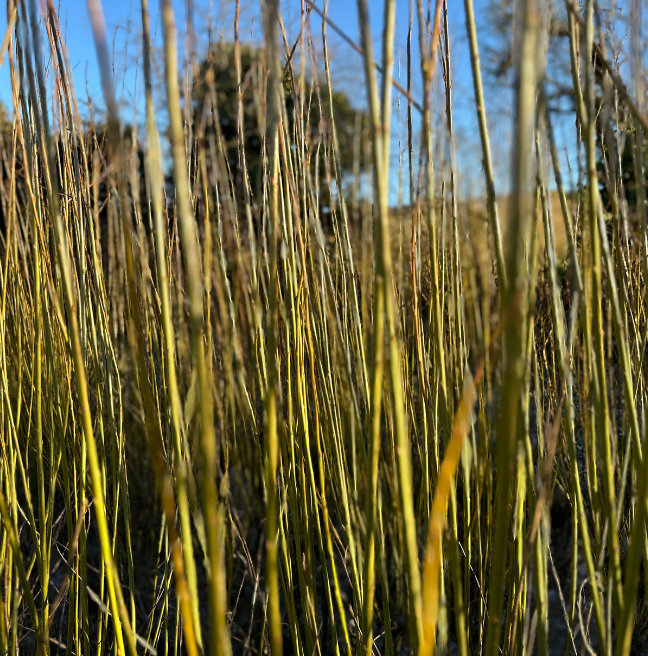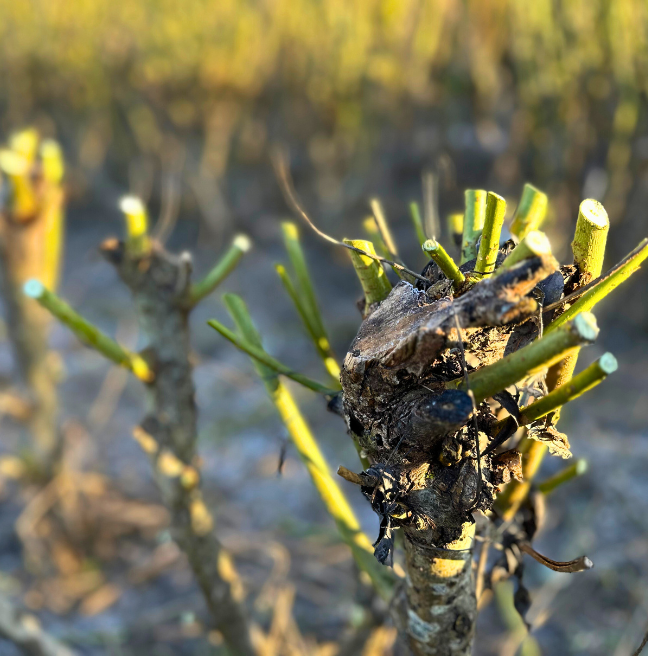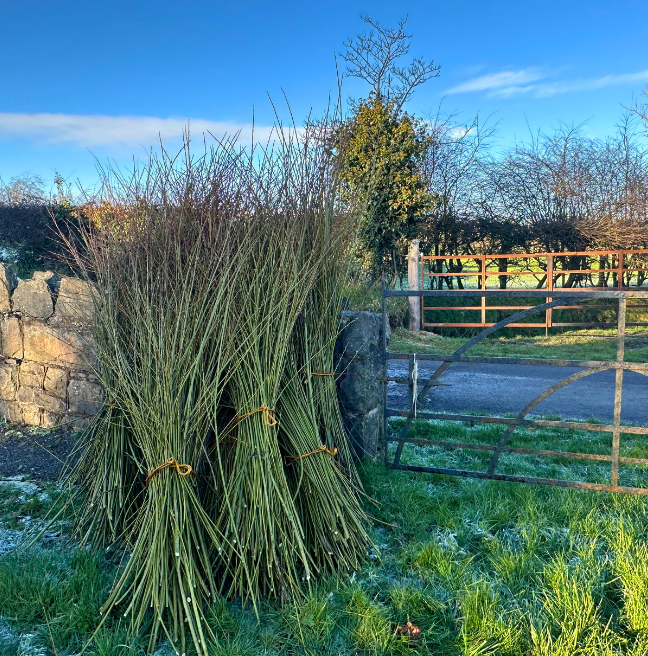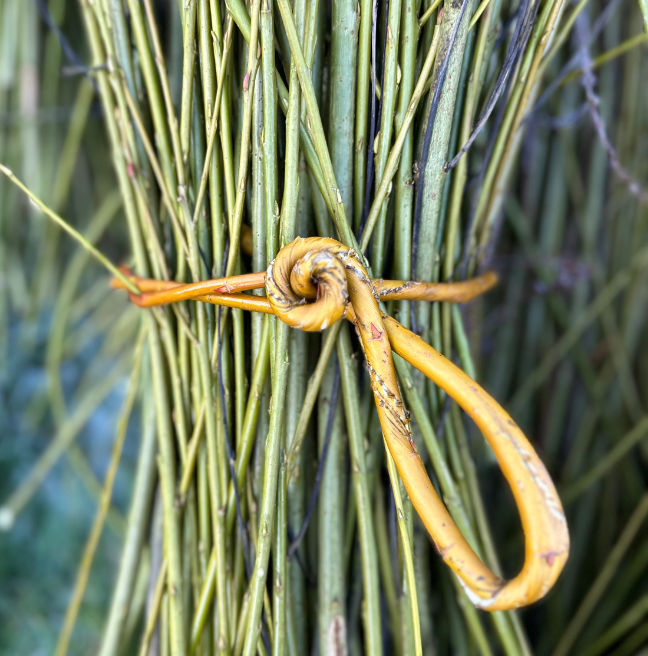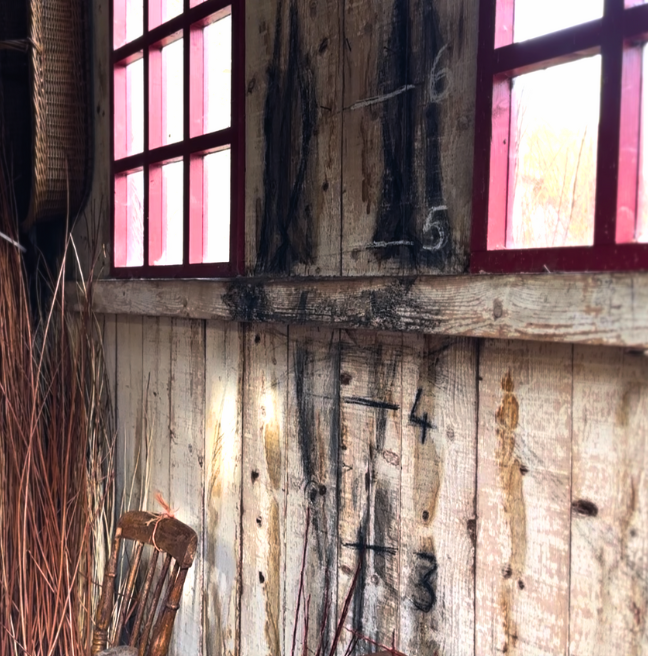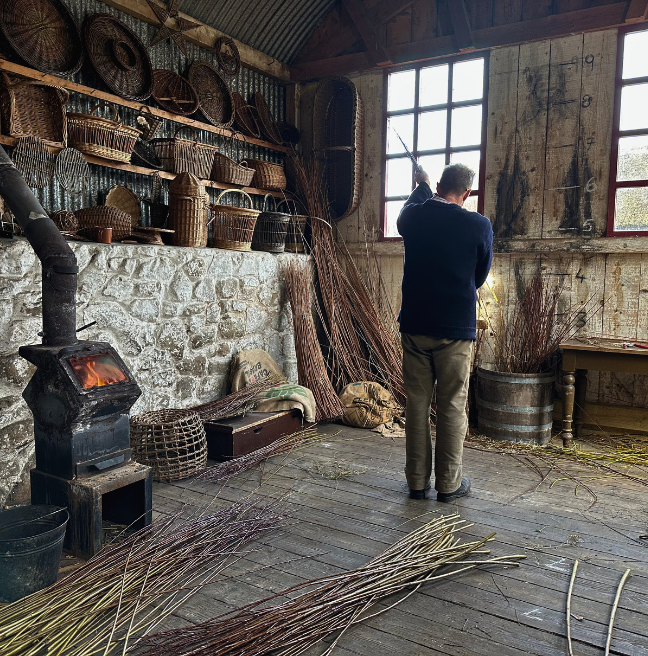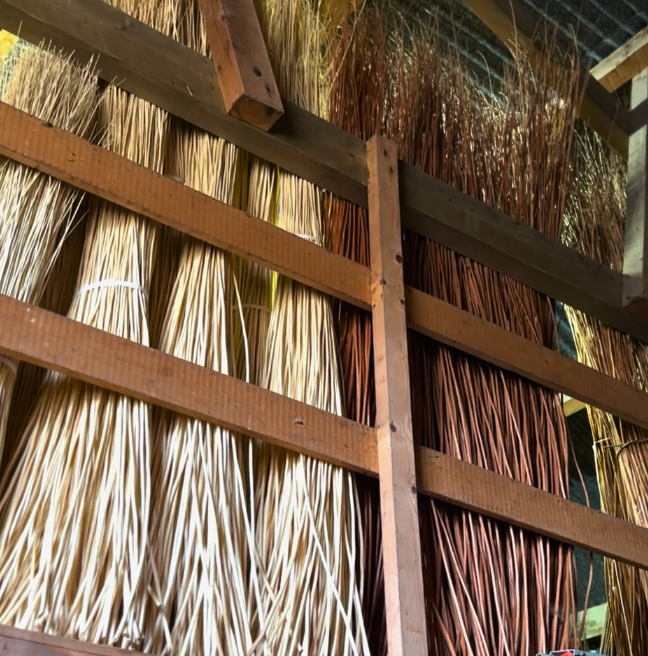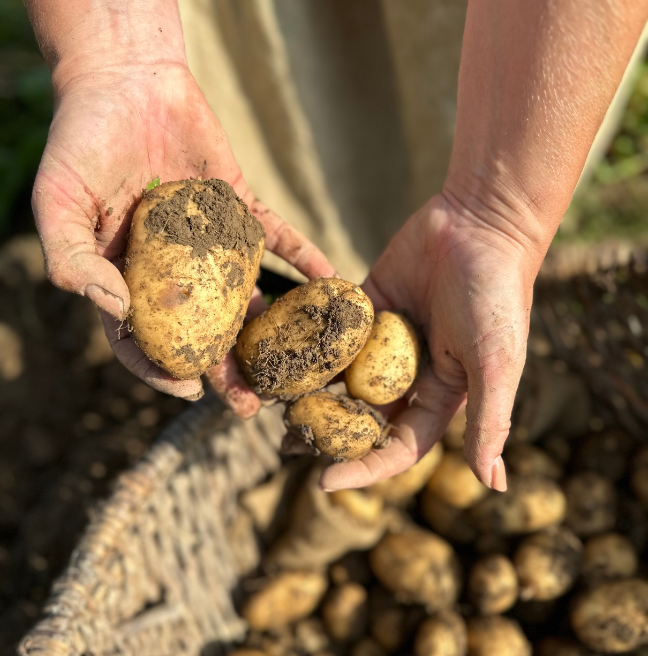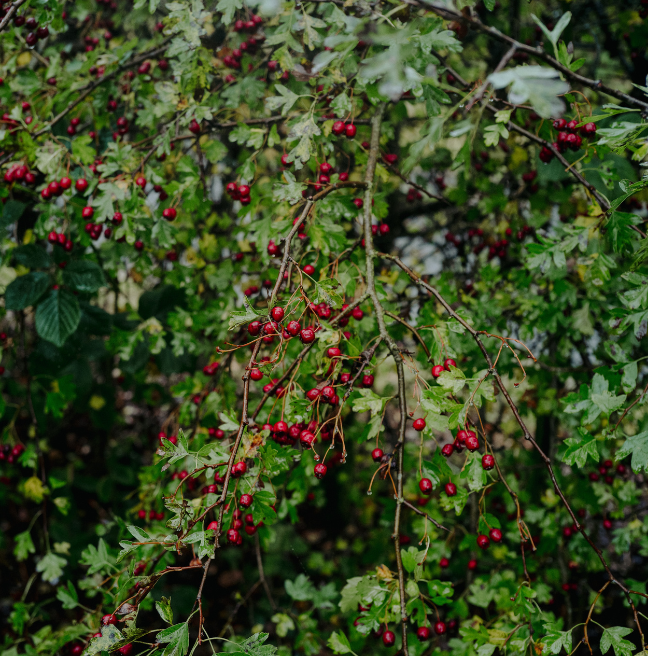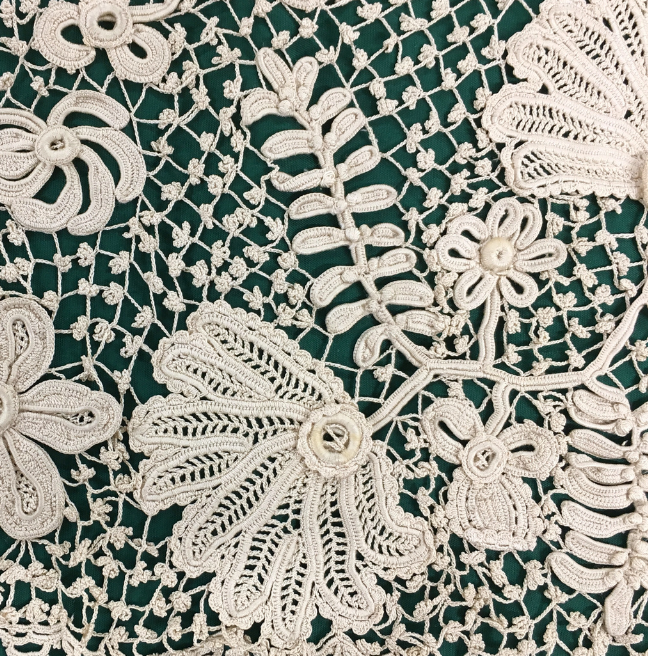
The Willow Harvest
Follow along with this year's willow harvest with craft demonstrator Bob Johnston.
Willow in Northern Ireland
In the past, people would use plant material that was indigenous to their area for basket weaving. Their raw material had to be essentially free. In Ireland, that happened to be willow.
Traditionally in Ireland, in every town, there would have been somebody growing some willow. They may have grown it and sold it as a crop to makers, or they may have used it themselves. Basket weaving would have been a traditional skill passed down through the generations.
Willow is a very easy crop to grow, and it thrives in Northern Ireland. This is because of the cool, moist climate and abundance of water. Willow needs a constant supply of water during the growing season, and prefers moist, well-drained soil.
Willow will grow almost anywhere in Northern Ireland. If you placed a 12-inch cutting into the ground, it would self-root and grow. After the first harvest, willow can be harvested annually for 30-60 years.
Harvesting the Willow
Willow harvesting involves cutting willow stems after the leaves fall and before the buds swell. It's usually done during the dormant season in winter, from mid-October to early March. Bob begins this harvest in January.
Bob cuts the base of the willow with sharp pruning shears and roughly piles the willow into groups of the same species and thickness.
The willow is very fast growing, and will grow again to be harvested next year.
Bob ties the rough piles of willow and sets them to the side of the field, ready to be delivered to his workshop for the next stage of the process.
The Willow Workshop
Once the fields are harvested of willow, the bundles are brought back to Bob's workshop. Bob’s workshop was designed specifically for the craft of willow making. The workshop was built before Bob’s time, but it was based on basket makers' workshops from the shores of Loch Neagh.

Bob harvests around ten varieties of willow at the Folk Museum. The difference in these varieties can be seen in their colours and size.
Once harvested, Bob has to sort through the branches to to remove things like grass, weeds, and nettles. After removing the debris, the willow is broken down into different sizes. This makes it a lot easier to use throughout the rest of the year.
Bob sorts the willow into bundles that are the same height, from nine foot down to three foot. He stands the willow in a barrel and brings it away in one foot increments.
Traditionally, people would have sunk the barrel into the ground to make it easier to reach the taller branches.
Working with Willow
Once the willow is graded, finished and bundled, it sits outside for a couple of weeks. It is then brought in and stored in the rafters where there is good ventilation and drying space. If the space isn’t well ventilated, the willow wouldn’t have the chance to dry and would become mouldy.
When the willow is first harvested, it is quite puffy because it still has a lot of sap in it. As that sap dries, the rod shrinks. Bob tries to get the shrinkage out of the willow before he works with it, otherwise the structure will loosen over time. If a basket was made with half-fresh willow and was brought inside a warm house, the basket could lose its form. To get a better result and finish, the willow is completely dried out for about six months.
Once the willow is dried, it loses its flexibility, so it has to be re-soaked before it is able to be woven. The willow absorbs moisture and becomes flexible, meaning it can be bent without breaking.
The soaking time varies according to the size and thickness of the branch. Depending on the size of the willow and the weather conditions, some willow could take three weeks to soak. The smaller branches sometimes take only a few days to soak.
Working with willow requires careful planning. Willow grows very fast, and a weaver must always have a continuous supply of ready material. Sometimes this means working three to four weeks in advance. Getting the willow properly graded and soaked is paramount to the willow being usable. Bob admits that while this does seem like quite a slow, repetitive process, it's one of his most important tasks in the whole year.
